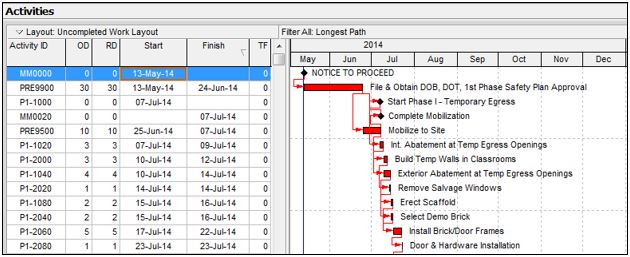How to Get Your Construction Team to Actually Use the Schedule
Here’s an all too common question I recently received from a construction management firm:
“Our company wants to start using schedules to help manage our projects. Most of our employees don’t believe in schedules and don’t bother to use them. What’s the best way to help our company mature and change the way we look at using schedules?”
I think the first thing you must do is show people how a schedule can make their job easier and make them better at their job.
For example, on a project I recently worked on, none of the submittal activities were in the schedule. There was nothing about steel fabrication and delivery, nothing about structural stud fabrication and delivery, nothing about the roof submittal, or anything like that. The schedule only included construction activities.
Each of those activities started late. The roof, the structural steel, the structural studs, and all the related construction activities started late. They started late because people lost track of the procurement process for these items.
When you look at the project, you’ll see the steel erection got started late. But why did it get started late? It started late because no one was paying attention. The submittal process started a month late.
Good Schedules Will Make Your Job Easier
One of the things I think we need to be able to show construction professionals is that having a good schedule on the project really makes a difference in terms of the quality of their execution.
Another place where people can learn to appreciate the value


